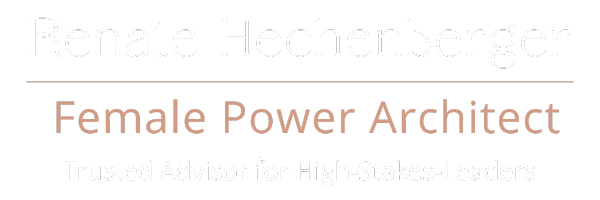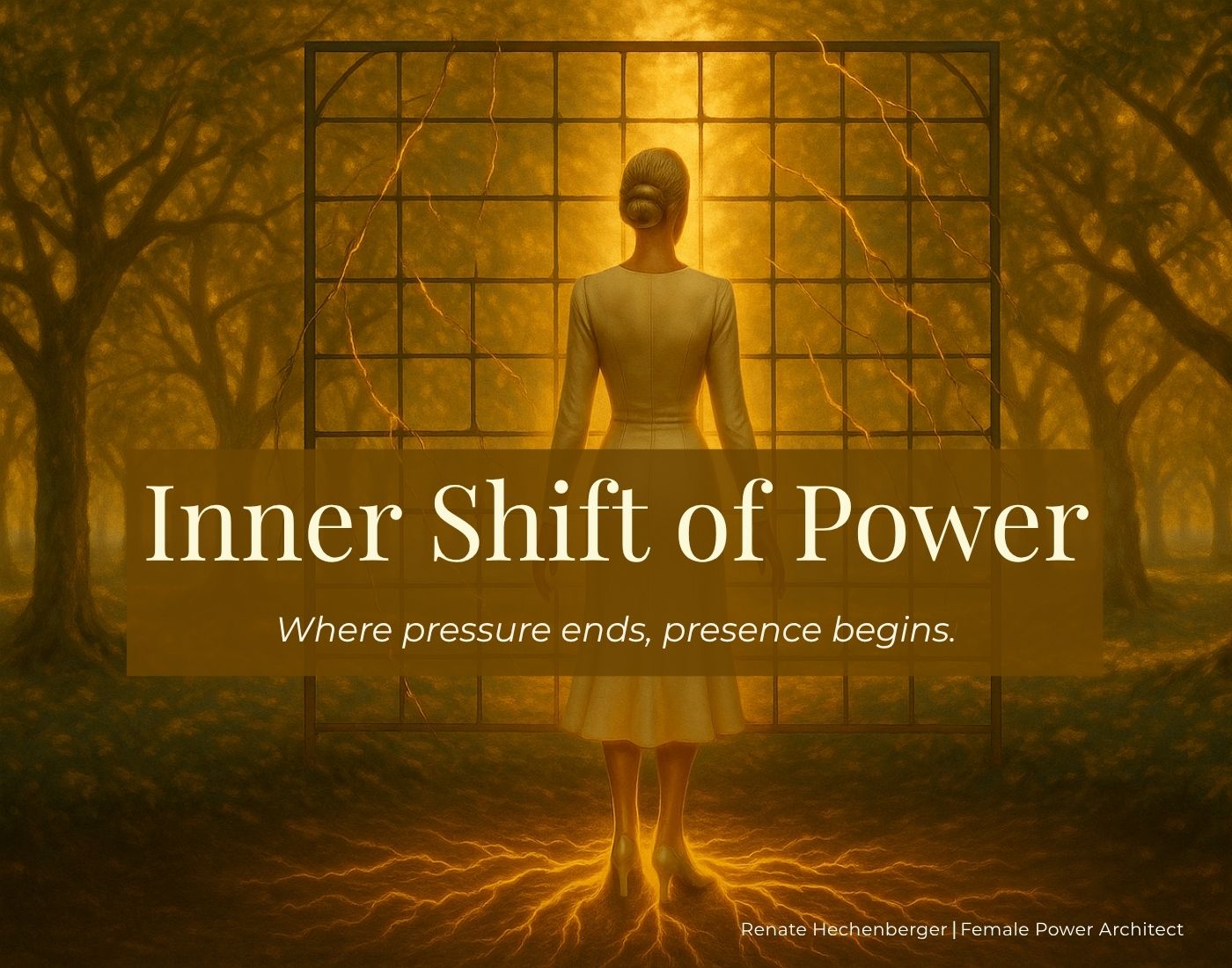When Pressure Masquerades as Empowerment
Too often, women are placed in leadership when the ground is already shaking — celebrated at the top, yet without real support. The so-called glass cliff is not empowerment, but exposure.
The recent nomination of Evelyn Palla as CEO of Deutsche Bahn carries this signature in another form. Officially, she is hailed as a “renewed mandate.” Yet even before she had entered her office, voices are already questioning her record: What great achievements can she really claim?
It is a question almost never asked of men stepping into the same role. Their authority is assumed until proven otherwise. Women, by contrast, are celebrated with headlines and undermined with doubts in the same breath. Suspicion precedes trust.
This is the quiet bargain that has repeated for decades: women are invited into positions of power, but too often without equal backing, resources, or confidence. They are placed visibly in the light, but on ground already unstable. When the structure falters, the blame falls swiftly on their shoulders — and if they succeed, they are often replaced by men again.
My counter-narrative begins here: not sending women to the cliff, but creating spaces where they can lead with clarity, integrity, and full support.
Hedwig After the “No”
For Hedwig, this bargain was also real. She had carried her company through its IPO and was celebrated as founder and CEO. Yet support around her was fragile, and loyalty often conditional.
In the last chapter of her story, you saw her draw a sovereign “No” in the boardroom — refusing to lend her authority to a project that violated her sense of integrity. That moment cut one of the deepest wires that had bound her: the belief that survival meant compliance.
But the real transformation did not end there. The “No” was only the doorway. What followed was quieter, less dramatic, but ultimately more decisive. It was the inner shift that would change how she led from that moment on.
Doubts at the Doorstep
The night after her refusal, Hedwig sat in her car in the dark garage, hands on the steering wheel. Her heart still pounded. She had spoken against the tide. She had held her line. But the harsh opposition she faced — the long, drawn‑out fight to get them to agree with her version of the proposal — haunted her.
Would they eventually sideline her? Would they erode her influence in subtle ways? Could the board diminish her role, even with her majority stake? These questions crowded her as she drove home.
And yet, when she entered her apartment and caught her reflection in the mirror, she noticed something unfamiliar: her own eyes, steady and unflinching. No migraine. No tight jaw. The pulse that had hammered through her throat all day was gone.
For the first time in years, she felt not depleted, but strangely clear. Something fundamental had shifted — not in the system around her, but in her own ground.
Beyond Resistance
In the days that followed, Hedwig discovered the difference between resisting pressure and not being defined by it.
For years, her leadership had been measured by how much weight she could carry, how much pressure she could endure. She had trained herself to survive under impossible loads. That was the old pattern: leadership as endurance.
But now, something subtler unfolded. The pressure did not vanish. The expectations, the politics, the voices of dissent were still present. What changed was her reference point.
She was no longer measuring herself against the weight of external demand. She was drawing strength from a steadier source within.
This shift did not make her untouchable. Fear still visited her. Doubts still rose. But they were no longer the ground she stood on. The ground had moved inside.
The Architecture of Power
This is what I call the inner shift of power. It is not about becoming harder or invulnerable. It is about relocating the seat of decision-making.
– No longer reacting to pressure.
– No longer borrowing authority from the system’s approval.
– No longer defining competence by crisis endurance.
Instead:
– Leading from clarity that lives in your body.
– Becoming the source of presence that steadies others.
– Standing on ground that cannot be withdrawn by shifting loyalties.
For Hedwig, this was not a single revelation, but a practice. Each day, each decision, she tested the new ground:
What if I do not act to relieve pressure, but to embody presence?
When she answered from that place, her actions carried a different weight. Meetings no longer drained her. Negotiations no longer left her hollow. Even conflict, though uncomfortable, did not strip her energy.
The Trellis and the Cliff
In orchard language, this shift is the moment when the trellis loosens its hold.
The glass cliff and the trellis are two faces of the same architecture. Both bind women into roles of proving worth under conditions designed to undermine them. Both reward survival but punish sovereignty.
Generations of women have carried this bargain: bound to wires of compliance, elevated to shaky ground, then faulted when collapse came.
Hedwig’s shift shows another possibility. Even when the system does not provide equal ground, you can still root your leadership in an inner architecture. That root is not given by others. It is reclaimed — not as a vague memory, but as the lived recognition that power was never absent, only covered. To act from it is what changes reality.
The Long Story of Female Power
Power sourced inside is not new. It has always been there. But over centuries it was systematically buried. When humanity shifted from the goddess to the god, from cycles to hierarchies, female power was suppressed. Religion, law, and social order agreed: the female was to serve — with no legal entity, no independent voice, nothing outside the authority of father, husband, or brother. Even today, women still battle for power over their own bodies.
What cuts deepest: women themselves became guardians of this code. Ancient survival rules, once carved out under oppression, were passed down as unquestioned law: Do not fight men, rule, or custom. Be a good woman — confined to family and children. Keep the peace at any cost.
Mothers taught daughters these codes not out of cruelty, but protection. And so the wires became woven through generations.
Every woman is bound to the trellis from her first breath. Compliance is presented not as choice, but as nature. To cut a wire and reclaim inner power is to step outside an unseen ancestral contract — a millennia‑old membership agreement. Once protective, it has hardened into a curse. The ancestral voices echo: You will be alone if you do not comply. It is terrifying because it is not merely personal, it is a collective rule of belonging.
And when overt legal restrictions faded, focus shifted to the battle of appearance — body, clothes, make‑up, jewellery. The Barbie, the Stepford wife, and their modern equivalents. Women compete relentlessly on that stage, told that looking fantastic is power. But it is not. It keeps women divided, their energies never united, ensuring the old structures remain intact.
This is why the inner shift is radical. It is not just a personal change but a breaking of ancient codes. These rules may once have offered protection, but today they must be left behind — wire after wire.
The Patterns Women Inherit Today
These ancient codes still echo in the psyche of women in leadership. They show up again and again in three patterns:
– I am invisible.
– I am not good enough.
– I am alone.
Each of these wires is a direct descendant of the survival laws passed through generations. They drain energy and isolate women, even at the height of their success. Naming them is the first step to loosening their grip.
The Social Price of Success
The more successful a woman becomes, the more she is judged as unlikeable. This social price is unique to women: what is admired as authority and ambition in men is labeled coldness or arrogance in women. It is another form of the hidden bargain, punishing women for claiming space, and it keeps many from stepping fully into their power.
Female Power as Source
This is the heart of Female Power as I define it.
Not power borrowed from position.
Not power granted conditionally by a board or a system.
Not power proven by carrying pressure until your body breaks.
But power reclaimed inside — as source.
This is why I say Female Power is not performed, it is remembered through action. Once the inner architecture aligns, presence flows without depletion. It nourishes instead of draining. It steadies instead of exhausting.
Practice: Source One Decision
This week, I invite you to try this:
- Notice one place where you feel pressured to perform — a meeting, a negotiation, a family demand.
- Pause. Instead of reacting, breathe into the question:
If I were the source here, what would I decide?- Take one small action from that answer.
It might feel risky. It might feel like nothing at first. But your body will register the difference. Each time you act as the source, the wires of pressure lose a little more hold.
The Orchard Beyond the Cliff
Hedwig’s journey is only one thread in the orchard. But her story shows what is possible when women stop accepting the glass cliff as destiny.
The orchard is full of women who are cutting wires, refusing to be defined by pressure, and rediscovering the ground beneath their own feet.
Not heavier. Not harder. But steadier. Clearer. More whole.
This is the counter-narrative I stand for:
– No more sending women to the cliff.
– No more applauding with one hand and undermining with the other.
– No more equating leadership with exhaustion.
Instead:
– leadership sourced from within,
– anchored in clarity,
– carried with presence.
This is Female Power.
And it begins with the inner shift.
About the Author
Renate Hechenberger works with women in high-stakes roles — from board seats to executive leadership to founder journeys. And with those whose influence takes other forms: in the arts, academia, or public life. Wherever the stakes are high, presence and integrity are non-negotiable.
👉 If this resonates, you are welcome to download my new E-Book Unapologetic Power and explore more with me in a private Power Talk.
© 2025 Renate Hechenberger. All rights reserved.
Credit: Image created with ChatGPT- DALL·E (AI-generated), customized by Renate Hechenberger

